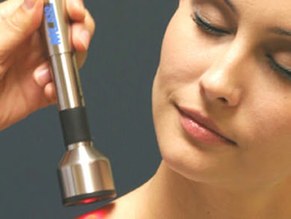Two strange things happened yesterday to this Colorado Springs Chiropractor.
Junior Seau died by a gunshot wound to the chest, and I came across a Facebook rant by a friend of mine on gun control, in which 37 people responded adamently, on both sides of the fence.
The timing of both unrelated events was uncanny. The Facebook posts included all sorts of thoughts on gun crime, and gun control, and deaths by guns.
I responded to the post, and this is what I pointed.
Freakonomics is a book that makes a case that we put far to much emphasis on stats that mean very little and far to little emphasis and passion on stats that mean a lot. Our perspective of the world is slant, and statistics often "right the ship."
In 2007, according to Wikipedia, 31,224 people died by gun shot wound. Of those, more than 17,352 were suicide deaths, which leaves a little over 13,000 non-suicidal deaths by gun shot wound.
Compare that to deaths by over-the-counter NSAID drugs - like Advil and Aspirin - which amounted to 16,200 in 2000, according to the Journal of the American Medical Association (JAMA).
But that's nothing compared to non-error deaths by prescribed medication. The belated Dr. Barbara Starfield (MD) of Johns Hopkins School of Public Health and Hygiene, published in 2000 in JAMA, that 106,000 people died that year due to non-error doctor-prescibed medication in hospitals. Dr. Joseph Mercola, DO, reports that another 199,000 died in outpatient settings by non-error reactions to pharmaceutical drugs.
According to Dr. Starfield's pulished article, approximately 225,000 people died in hospitals due to iatrogenic deaths (iatrogenic definition: Of or relating to illness caused by medical examination or treatment) in 2000, making it the third leading cause of death in the US.
Plus, Kaiser Health News reports that 75% of the approximate $2 Trillion spent in the US on the health care, is actually spent on preventable, chronic disease. That's $1,500,000,000,000 on preventable illness.
On top of deaths by prescribed medication, there were 2.2 million adverse drug reactions in 2000.
In comparison, the College of American Emergency Physicians reported that there were approximately 20,000 deaths by hardcore street drugs like cocaine and heroine in 2000.
Point is, gun control is such a hot topic, but should it be? Aren't there bigger fish to fry that are causing much more havic, death toll and expense in the US than guns. I was terribly sad to hear about Junior Seau and Trayvon Martin (both shot). But it seems like no one is crying out about the death toll in our US health care.
Junior Seau died by a gunshot wound to the chest, and I came across a Facebook rant by a friend of mine on gun control, in which 37 people responded adamently, on both sides of the fence.
The timing of both unrelated events was uncanny. The Facebook posts included all sorts of thoughts on gun crime, and gun control, and deaths by guns.
I responded to the post, and this is what I pointed.
Freakonomics is a book that makes a case that we put far to much emphasis on stats that mean very little and far to little emphasis and passion on stats that mean a lot. Our perspective of the world is slant, and statistics often "right the ship."
In 2007, according to Wikipedia, 31,224 people died by gun shot wound. Of those, more than 17,352 were suicide deaths, which leaves a little over 13,000 non-suicidal deaths by gun shot wound.
Compare that to deaths by over-the-counter NSAID drugs - like Advil and Aspirin - which amounted to 16,200 in 2000, according to the Journal of the American Medical Association (JAMA).
But that's nothing compared to non-error deaths by prescribed medication. The belated Dr. Barbara Starfield (MD) of Johns Hopkins School of Public Health and Hygiene, published in 2000 in JAMA, that 106,000 people died that year due to non-error doctor-prescibed medication in hospitals. Dr. Joseph Mercola, DO, reports that another 199,000 died in outpatient settings by non-error reactions to pharmaceutical drugs.
According to Dr. Starfield's pulished article, approximately 225,000 people died in hospitals due to iatrogenic deaths (iatrogenic definition: Of or relating to illness caused by medical examination or treatment) in 2000, making it the third leading cause of death in the US.
Plus, Kaiser Health News reports that 75% of the approximate $2 Trillion spent in the US on the health care, is actually spent on preventable, chronic disease. That's $1,500,000,000,000 on preventable illness.
On top of deaths by prescribed medication, there were 2.2 million adverse drug reactions in 2000.
In comparison, the College of American Emergency Physicians reported that there were approximately 20,000 deaths by hardcore street drugs like cocaine and heroine in 2000.
Point is, gun control is such a hot topic, but should it be? Aren't there bigger fish to fry that are causing much more havic, death toll and expense in the US than guns. I was terribly sad to hear about Junior Seau and Trayvon Martin (both shot). But it seems like no one is crying out about the death toll in our US health care.

 RSS Feed
RSS Feed